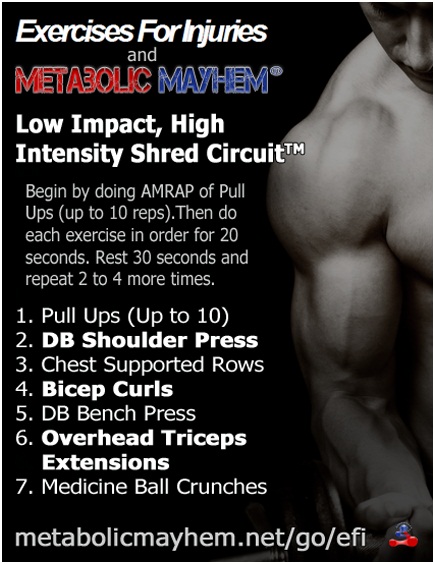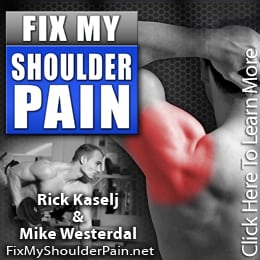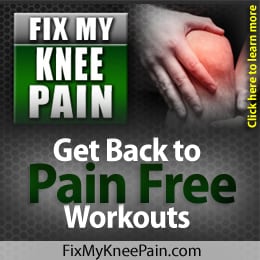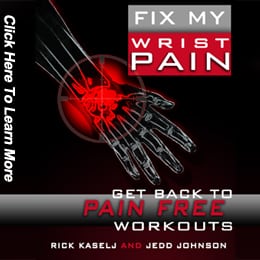How I Trained for an Adventure Race with a Stress Fracture in My Foot
I’ve had the privilege of getting to know Rick over the past year. Like an unusual number of people, I met Rick in the seedy bowels of the Las Vegas underbelly. During a recent conversation, I mentioned to Rick that I had recently completed a Spartan Beast race.
As I was telling him the story, one detail caught his attention. I mentioned that I had trained for it without doing much running.
Needless to say, he was intrigued. He asked if I would share this story and my training philosophy with his readers…
So here we are. And here’s my story.
…
How I Trained for A Long Distance Adventure Race While Recovering from A Foot Injury
One number flashed in my mind. 15. And I didn’t have much time. 
It was 9AM and I was sitting in the doctor’s office.
“It definitely sounds like a repetitive stress injury, and maybe the early onset of a stress fracture.”
My doctor could see the disappointment.
“You did good by coming in as soon as you felt discomfort. Most people try to train through it and make it worse.”
Two days earlier, I was about 2 miles into what was going to be an 8-mile run. I was starting to feel a slight burning in the middle of my foot at my fourth toe (you know, the little piggy that “had none” and located next to the piggy that goes “wee, wee, wee, all the way home”).
After another mile of listening to the steady thump of my feet hitting the asphalt, I knew I had a problem. I pulled up, and with beads of sweat running down my face, I started the three mile walk back home.
By the time I hit my driveway, the pain had subsided somewhat, but it was still there.
I walked into my kitchen and yanked open my freezer. I reached in as the cool air billowed out. I grabbed my ice pack.
“RICE, RICE, RICE” I repeated over and over. Rest, Ice, Compression, Elevation. As a former collegiate athlete, I’d been through that routine hundreds of times before.
15.
There was only about 8 weeks left before my next adventure race – the Spartan Beast. A friend of mine had convinced me that it would be a good idea to do an accelerated half marathon training program to get ready for the distance.
I’d trained for 13.1 before and finished 3 Tough Mudders. But I gave myself plenty of time to ramp up to that distance. This time, I went from my normal Metabolic Mayhem style training – short bursts of high intensity training – to a 6 mile “long” run in the first week.
Then 7 the next.
Then 8.
Two days after that aborted run, I was in the doctor’s office.
“No distance running for at least 6 weeks,” she said. “And no weight bearing activity for at least a two weeks. Walk only as much as you need to for the next 7 to 10 days.”
15. How was I going to make 15 miles? I’m way too stubborn to give up on the idea of doing this event.
“What about after that?” I asked with a small twinkle of hope in my southern drawl.
“If it doesn’t cause you pain, you can do it. That’s the basic rule of thumb. But seriously, you can’t do any type of distance running, or you’ll just end up making it much worse.”
Another thing I learned from being an athlete is if there’s no real reason to play through the pain, then don’t. So I didn’t. For the next week I minimized my movement.
But I didn’t give up. In that idle time, I formulated a plan.
15. Yep. It could be done. Metabolic Mayhem style.
In that time away from exercise, I had an ah-ha moment. I knew in the back of my mind that there were several studies done in the late 90’s that showed intense, intermittent exercise increased endurance.
But their importance didn’t dawn on me until I was sitting in my recliner, ice wrapped foot in the air, trying not to go stir crazy.
I had a copy of Tim Ferris’ the 4-Hour Body sitting next to me. I had only glanced through it before. Between the day job, family, training, and keeping up with my fitness site, I didn’t have a ton of time left over for leisure reading.
I picked up the book and opened it to the Table of Contents. For some of Rick’s readers who’ve read the book, you may be thinking, “Oh, Ben’s going to talk about the ‘Reversing Injuries’ section.”
That’s a good guess. But no. What caught my eye was a section on Ultra Endurance Races. In flipping through the pages in that section, two passages jumped out at me.
The first point that jumped off the page was that if a pound of fat contains 3,500 calories (Tim says 4,000, but I’m going to stick with the traditional number), even at 150 pounds and 5% body fat, “your available 7.5 pounds of fat can keep you humming for several hundred miles.”
I grabbed my calculator. Being the data nerd that I am, I knew I burned about 170 calories per mile. So a pound of fat has the potential to carry me 20 miles!
The second point was this:
“If you can run a decent 10k, you already have a sufficient aerobic base to run a 50k. The training should therefore focus on getting you to move faster speeds while remaining aerobic.”
WHOA. There it was. My mind raced. Based on this information, Metabolic Mayhem style training could, theoretically, get you ready for a longer distance race.
In that moment, I recalled the studies I had read in the past that looked at training intensity and how it affected endurance. The most famous of these studies was a 1997 study by Tabata et al (you may have heard of the Tabata protocol). But his wan’t the only one that drew similar conclusions. Studies by Gaskill, et al (1999), Hawley et al (1997), and Rodas et al (2000) all concluded that high intensity training can be used to increase endurance.
…
Hey, I don’t mean to interrupt you there, Ben, but what types of workouts did you do?
Alright, alright. I’ll get to the good stuff.
…
I designed a workout I could do in my basement that literally allowed me to do ultra-intense, Metabolic Mayhem style workouts without putting any stress on my feet while I trained.
After a brief warm-up, it went like this:
Stationary bike Tabata protocol x 4 minutes
[That’s 20 seconds of all out maximum effort, followed by 10 seconds of rest. Repeat 8 times for a total of 4 minutes.]
After a brief 5-minute recovery (if you do the bike right, that will feel like the shortest 5-minutes of your life), you start into a traditional Metabolic Shred Circuit using dumbbells. This allows you to not only increase your endurance, but prepare for the obstacles as well, since you’re doing resistance while significantly fatigued.
The Shred Circuit went like this:
- Pull Ups x AMRAP (up to 10)
- Dumbbell Shoulder Press x 20 seconds
- Chest Supported Rows x 20 seconds
- Bicep Curls x 20 seconds
- Dumbbell Bench Press x 20 seconds
- Overhead Triceps Extensions x 20 seconds
- Medicine Ball Crunches x 20 seconds (holding MB to your chest)
Rest 30 seconds and repeat 2 more times.
Note: When you do this routine, you’ll want to find a dumbbell weight that you can use for the entire circuit (you can adjust weights up or down during the 30 seconds rest period).
Cool down with a moderate paced 5-minute session on the stationary bike.
The whole workout, cool down included, took me about 22 minutes. I was exhausted. And pleased.
My goal became to increase the number of rounds and add in a short bike interval in the middle as I moved closer to the race.
As the race drew closer, I upped the intensity by increasing volume, working my way up to 6 circuits [3 rounds, a 12 minute 1:1 bike interval, followed by 3 more rounds].
That final workout took just under 42 minutes. Compare that to running 10 miles at an 8 minute pace (which is a great pace, in my opinion), the Metabolic Mayhem workouts were taking half as long.
If you do this routine right, you’ll only be able to do it 3 times per week max.
What you’re doing by going all out and really jacking up the intensity is training your body to remain aerobic at high intensities. That means that you burn fat as your primary source of fuel while exercising – especially when you compete at lower intensities during an endurance race.
What were the results of my personal experiment?
By the time the race rolled around, I was confident I could complete it. And, by the end of the race, it was the farthest I had ever traveled on my feet at one time. 15.
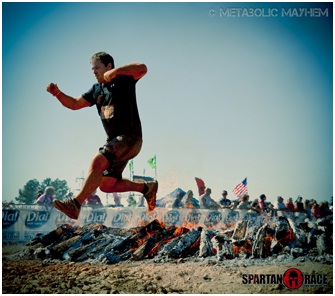 Sure, there were some spells of walking involved. But I ran with a group where most everyone else had done, long, slow, endurance training. And I was as prepared as any of them…
Sure, there were some spells of walking involved. But I ran with a group where most everyone else had done, long, slow, endurance training. And I was as prepared as any of them…
… While training a fraction of the time. Oh, and I never left my basement.
Better still, I had lost several pounds of body fat before the race. I looked and felt great.
Best of all?
Because I was able to minimize the load on my foot, I completed the race pain free. Right over there is a picture of me jumping over the fire obstacle about 25 yards from the finish line.
15 miles.Done.
Just a few months ago, the Journal of Applied Physiology, Nutrition and Metabolism published yet another study further supported this type of training.
The study compared two groups – one that did 4-minute Metabolic Mayhem style workouts 4 times per week vs. a group that did 30-minutes on the treadmill 4 times per week.
Not only did the Metabolic Mayhem style group have similar increases in overall endurance, they enjoyed their workouts more!
I predict in the coming year, both adventure style races such as the Spartan race series and Tough Mudder will continue to explode in popularity. At the same time, you’ll see a growing focus on short, intense workouts like Metabolic Mayhem. You can check out my Top 13 Fat Loss Predictions for 2013 plus 33+ Bonus Predictions from other top fitness experts by clicking here (will be out later this month).
The moral of the story is this… Short, intense workouts are not only more fun, but they help you to shed fat and get into better shape in a fraction of the time of longer, ineffective, boring cardio workouts.
About Ben Teal
 Ben Teal is a Certified Metabolic Trainer and is the creator of Metabolic Mayhem where he helps the busiest moms and dads shed their stubborn body fat with workouts that last 20 minutes (or less!).
Ben Teal is a Certified Metabolic Trainer and is the creator of Metabolic Mayhem where he helps the busiest moms and dads shed their stubborn body fat with workouts that last 20 minutes (or less!).
Metabolic Mayhem is his passion, but it isn’t his profession. Ben is an economist (BA and MS) and a process efficiency expert. This gives him a unique (and entertaining) take on fitness… one that has been extremely successful helping other super busy men and women burn fat, build muscle and change their bodies.
When he’s not in the office crunching data, working out or writing for Metabolic Mayhem, you can often find him stuck in traffic somewhere between home, work and driving his two wonderful kids between seemingly endless activities.
You can check out Metabolic Mayhem here:
.
